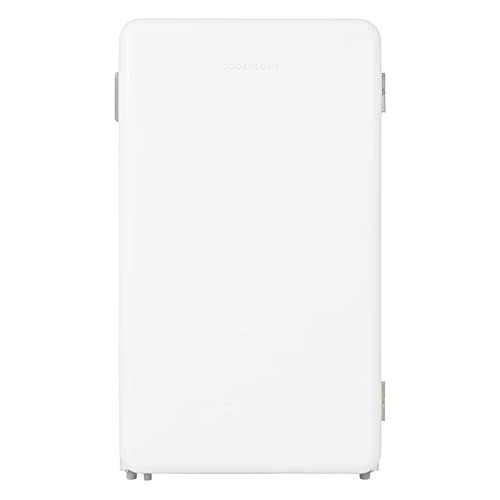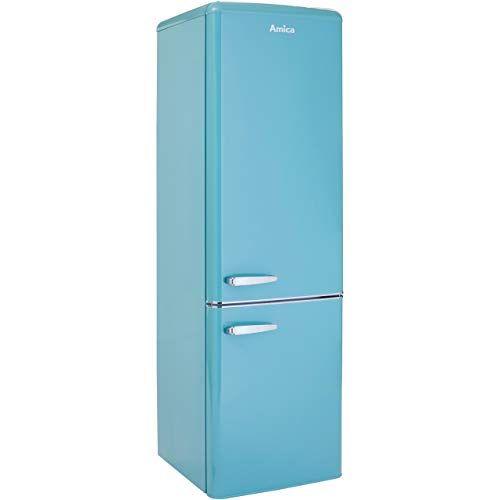How Refridgerator Changed My Life For The Better
페이지 정보
작성자 Sharyl 댓글 0건 조회 28회 작성일 24-05-12 23:39본문
 How to Choose a Refrigerator
How to Choose a RefrigeratorRefrigerators are kitchen appliances used to keep food and drinks cold. They are used at home as well as in hotels, offices and college dorm rooms.
Some refrigerators have sophisticated features such as sensors and cameras. Some have touchscreens that allow you to watch videos, portable fridge browse recipes, look up family calendars and shopping lists, or even leave notes for family members.
Temperature Control
The proper temperature in the refrigerator ensures food is safe to store, slowing the deterioration of many foods due to spoilage. This is especially important for food items like eggs and milk, which can quickly rot at room temperature, but remain stable in refrigerator temperatures. Refrigerators are also used to store pharmaceutical products such as vaccines and drugs that become less effective over time. Refrigerator monitoring systems are readily available to help ensure the medical facility or laboratory keeps an appropriate cold chain.
A refrigerator's internal thermal insulator keeps its contents cooler than the surrounding air. The heat pump transports warm air from outside the refrigerator into an insulated compartment, from which it cools down. The refrigerator is equipped with a control system which turns on the cooling system when its internal temperature exceeds the threshold set by the manufacturer. This stops the growth of bacteria in the refrigerator.
Each of the refrigerator zones is designed for Portable Fridge a different function. The bottom shelves are perfect for perishables, such as fresh vegetables and meats that require the minimum temperature to keep their texture and taste. Clearing the shelves allows cool air to circulate through the refrigerator. A separate drawer for deli can be used to store soft cheeses and cured meats to create the perfect charcuterie board.
Refrigerators also come with doors made of stainless steel or glass to protect the interior and allow for easy cleaning. Some refrigerators have doors that are alarms that can be programmed to warn you if the doors to the freezer or fridge are left open for too long. You can set them to alert multiple people, and in escalating levels depending on your requirements. You can set them to send temperature graphs by text or email.
Many refrigerators come equipped with thermometers however for those who don't, a stand-alone appliance thermometer can be a cheap method of monitoring the fridge and freezer temperature. It's important to check the temperature of your freezer and refrigerator frequently, particularly in the event of a power failure or if the temperature settings are changed manually. The ideal temperature for both the refrigerator and freezer is 40 degrees Fahrenheit.
Capacity of Storage
The capacity of your refrigerator is an important factor in choosing the right model to meet your needs. There are numerous sizes to pick from, ranging from small refrigerators that can hold a volume of less than 15 cubic feet to large models that accommodate more than 26 cubic feet. To determine the size you need, consider your family's eating habits and the number of people living in your home. For two people, an average of 11-13 cubic foot of refrigerator space is enough and 18 to 22, cubic feet is recommended.
In addition to assessing the space inside, look at the depth of your refrigerator. Certain models are deeper than others, which allows them to fit in small spaces and not take up too much space under your counters. Cabinet-depth refrigerators are another option, having the depth being roughly the same as the standard front of a kitchen cabinet (though handles can protrude a little further). They are a great option for homes where counter space is limited and can appear more stylish than traditional fridges.
Find out about the refrigerator's energy consumption and noise level when shopping. Many manufacturers offer quieter models for residential use, while certain models consume less energy than comparable models. Check the yellow Energy Guide label on appliances to find out about the typical energy usage for the specific model. Test the model by opening and closing its doors.
The pantry drawer is typically an entire width of the refrigerator that has separate temperature controls. It can be used to store various items. These drawers can be used to store party trays wine, other food items and more at a specific temperature. Based on the model, these drawers could come with pre-programmed settings for wine and deli meats as well as soft drinks.
Energy Efficiency
Refrigerators consume a lot energy. Therefore, it is crucial to choose an energy-efficient refrigerator. Over the years, refrigerators have become increasingly energy efficient. The insulation, motors, and magnetic door seals of a modern refrigerator use less energy than a refrigerator that is similar to its size. It is possible to reduce the power consumption of your refrigerator further by purchasing a highly energy efficient model. A refrigerator with an Energy Star rating will use much less energy than a model that is ten years or older.
It is important to consider energy efficiency for those who have limited access to electricity grids. For homes that are not connected to the grid, refrigerators are often among the most expensive appliances. Their high energy consumption also means that they require large amounts of solar home systems which aren't affordable for a lot of families earning less than $2 per day. The annual energy consumption of a refrigerator is therefore a crucial aspect in determining if it is affordable for consumers to buy and run (PATH and WHO 2013; McCarney et al, 2012).
To understand how fridges work it is important to understand the fundamental refrigeration cycle. A refrigerator cools down by pushing a refrigerant liquid through a sealed system. It begins as a liquid, and then goes through the compressor that makes it compress into the form of a vapor. The vapor is then pumped into coils outside the refrigerator, and draws heat out of it. It then cools, and turns back to liquid. This process is repeated over and over again, keeping food cold as the vapor moves through the coils.
Although refrigerators are among the most expensive appliances for off-grid consumers, enhancing their energy efficiency makes them more affordable. By reducing the amount of energy they consume it is possible for a refrigerator to be powered by a smaller SHS and reduce the overall cost of the system for consumers. The savings in energy are contingent on the size, design, and features of a refrigerator. Ice makers and water dispensers that are located through the door, for instance are costly, but can increase the energy consumption of the refrigerator, which in turn increases the amount of SHS required to power it.
Maintenance
The life span of a refrigerator could be greatly improved with regular maintenance and inspection. This can be done by inspecting the condenser coils, the ice maker, defrost drain, and the gasket seal on the door to make sure it's in good shape. Cleaning and replacing water filter is also essential. These simple maintenance tasks can prolong the lifespan of your refrigerator and also reduce your energy costs.
The easiest and most effective refrigerator maintenance task is to clean the interior of your refrigerator frequently. This includes throwing out old food items, wiping down shelves and crispers, walls and inside of your refrigerator's doors. This will prevent unpleasant odors as well as reduce the risk of foodborne illnesses. A refrigerator thermometer is recommended to check the temperature of your fridge frequently. Refrigerators that aren't maintained are prone to temperature fluctuations that could lead to food waste and higher electricity bills.
It is also important to clean the condenser coils in your refrigerator at least twice per year to get rid of any dirt hair, dust, and other debris that may have built up. The coils are situated on the rear or bottom of your appliance. They are basically radiator-like components that assist in helping remove heat from your refrigerator. When these are dirty, they aren't able to release heat effectively, and your refrigerator will require more power to run.
Check your refrigerator's seal, which is designed for an airtight seal between your fridge and the ductwork in your home. It is important to keep your portable top mount fridge (sovteip.ru)'s contents cold. However in time, the seal can be worn down by greasy fingerprints and sticky syrups. Clean your fridge's seal with an abrasive towel to keep it in good shape.
It is also a good idea, to clean the drip tray, which is located generally underneath the compressor unit of the refrigerator. The drip pan is responsible to collect the water that is drained from the defrost cycle of the refrigerator. It should be cleaned frequently to prevent the growth of mold and unpleasant odors.

댓글목록
등록된 댓글이 없습니다.